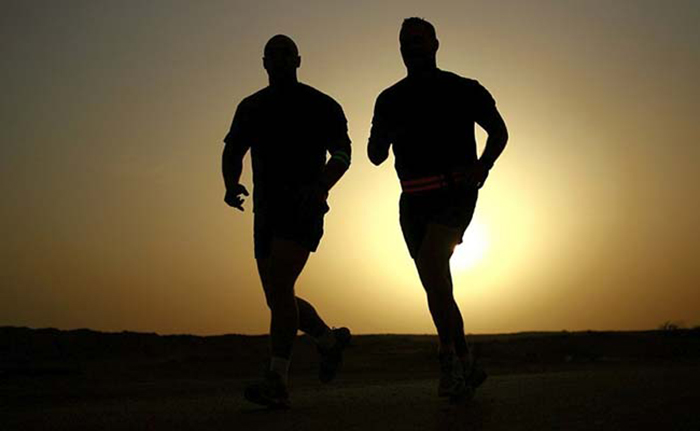Not likely.
Instead, suggested the surgeon general recently, they should start walking, because walking helps reduce and treat chronic illnesses, which affect about half of all adult Americans.
You have heard it before: Moderate physical exercise helps prevent and reduce the severity of chronic disease, such as high blood pressure and diabetes, and also improves mood and mobility.
Walking - a form of exercise that is accessible to almost everyone and doesn`t require special equipment or attire (other than comfortable shoes) - counts as moderate physical exercise.
But how much and when?
The government suggests 150 minutes of moderate physical exercise per week. But many experts suggest at least 30 minutes a day instead.
"Thirty minutes a day is where we see great health benefits," says Rick Richey, master instructor with the National Academy of Sports Medicine (NASM).
These health benefits include improved body composition (higher muscle-to-fat ratio) and decreased risk for metabolic syndrome (high blood sugar, excess body fat around the waist, high cholesterol and high blood pressure, which together increase the risk of heart disease, diabetes and stroke), according to Richey, who adds playfully:
"And your dog might appreciate it, too."
One popular way to measure how much you are walking is to use a physical activity tracker or pedometer. The magic number du jour seems to be 10,000 steps, which Lloyd Henry, a D.C. run-and-walk coach calls a "good starting point."
"The Fitbit or other trackers enable you to make sure you get your steps in. Some people even do their walking after their kids are asleep," Henry says. "It also shows you that everything counts, it adds up. Take the stairs instead of the escalator, park further away or get off at an early Metro (subway) stop."
In other words, you don`t have to get your 30 minutes (or the 10,000 steps, which is more than 30 minutes and equals roughly five miles) in one chunk, but over the course of the day.
"The goal is to make it part of your lifestyle," says Henry, who - when he is not teaching stride length, posture, foot placement and interval training - runs marathons and participates in triathlons.
Speaking of intervals: While walking generally is much less strenuous than running, there are ways to increase the intensity once you feel ready.
One way to do so is through intervals or "fartlek" (speed play), says Cedric Bryant, chief science officer for the American Council on Exercise.
"Fartlek is a kind of unstructured interval training. You can do it with running and with walking," Bryant says.
These types of intervals increase the intensity, which leads to more calories burned and increased strength and speed.
Kristen Ciuba, a Washington resident who counts walking as her main form of exercise, says she often does fartleks - though she didn`t know until recently that`s what they were called - to up the intensity.
"I usually do about 30 minutes three times per week," says Ciuba, director of nutrition services for Diet-to-Go.
She also often uses hand weights to increase the intensity.
Richey, though, says he is not a fan of weights while walking since they might interfere with posture, gait or balance.
Instead, he says, change the pace and terrain.
"You also increase the intensity by adding hills and stairs," he says.
Henry agrees and says he would rather do resistance training and other cross training, especially upper body strength, in a separate workout from walking.
"I think weights while walking introduce an unnecessary risk," says Henry.
"But you can also just do the stairs in your own home or at work," Henry says.
Even with the added intensity, though, studies show that walking is not comparable to running in terms of cardio training or weight loss.
In terms of other health benefits - such as the ones Richey previously noted - however, there are indications that walking is actually preferable to running.
This raises the question: Is walking only good for the 80 percent - the de-conditioned public - or can it benefit those who are already fit?
Henry suggests that walking can be helpful for runners and cyclists who are nursing injuries; Richey says walking can become a gateway activity for those who are getting started on their fitness path but later will look for something more strenuous, such as running; Bryant recommends walking as a form of active recovery for those who are very fit. Active recovery is a way to get physically and mentally ready - to stay loose - in preparation for your next workout.
Then there is the mind-body part.
"When everyone else in college was running, I started walking for exercise. I found it much more pleasurable," Ciuba says. "And part of the appeal of exercise is emotional well-being and enjoyment."
As Hippocrates said: "Walking is man`s best medicine."
More about:
















































